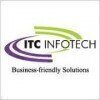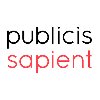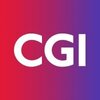
i
Birlasoft
Filter interviews by
Birlasoft Senior Business Analyst Interview Questions, Process, and Tips
Birlasoft Senior Business Analyst Interview Experiences
2 interviews found
I applied via Recruitment Consulltant and was interviewed before Feb 2023. There was 1 interview round.
(4 Questions)
- Q1. BASICS of Scrum
- Q2. What is scope creep. How to handle it?
- Ans.
Scope creep refers to the uncontrolled expansion of project scope. It can be managed by setting clear project boundaries, conducting regular scope reviews, and implementing change control processes.
Scope creep occurs when there is an uncontrolled expansion of project scope beyond its original boundaries.
It often happens when new requirements or features are added without proper evaluation or approval.
To handle scope cr...
- Q3. What is velocity
- Ans.
Velocity is the rate at which an object changes its position in a specific direction over a specific period of time.
Velocity is a vector quantity, meaning it has both magnitude and direction.
It is calculated by dividing the change in position by the time taken.
Velocity is measured in units such as meters per second (m/s) or kilometers per hour (km/h).
Positive velocity indicates movement in the forward direction, while ...
- Q4. Types of documents created
- Ans.
Various types of documents are created in the role of a Senior Business Analyst.
Business requirements documents (BRDs)
Functional requirements documents (FRDs)
Use case documents
Process flow diagrams
Data flow diagrams
User manuals
Test plans
Project charters
Risk assessment reports
(1 Question)
- Q1. Explain sdlc process properly along with test case
- Ans.
SDLC is a process followed to develop software. It includes planning, designing, coding, testing, and maintenance.
SDLC stands for Software Development Life Cycle
It includes 6 phases: Planning, Analysis, Design, Implementation, Testing, and Maintenance
Test cases are created during the testing phase to ensure the software meets the requirements
Test cases should cover all possible scenarios and edge cases
Test cases should...
Interview Preparation Tips
Skills evaluated in this interview
Interview questions from similar companies

(2 Questions)
- Q1. SQL queries different joins
- Ans.
SQL queries different joins
There are different types of joins in SQL: INNER JOIN, LEFT JOIN, RIGHT JOIN, and FULL JOIN
INNER JOIN returns rows when there is at least one match in both tables
LEFT JOIN returns all rows from the left table and the matched rows from the right table
RIGHT JOIN returns all rows from the right table and the matched rows from the left table
FULL JOIN returns rows when there is a match in one of t
- Q2. Insurance, P&C, stakeholder management
Skills evaluated in this interview

I applied via Company Website and was interviewed in Mar 2024. There was 1 interview round.
(2 Questions)
- Q1. Interviewer asked to explain the projects
- Q2. Explain about the projects

Pretty easy to answer
With 7-8 people random topic
(2 Questions)
- Q1. Mixed depends on experience
- Q2. Can be related to your role
(1 Question)
- Q1. One to one mostly how would you handle

I was interviewed in May 2024.
(2 Questions)
- Q1. How do you prepare BRD
- Ans.
To prepare a Business Requirements Document (BRD), I gather requirements from stakeholders, document them clearly, and ensure they align with business goals.
Meet with stakeholders to gather requirements
Document requirements in a clear and concise manner
Ensure requirements align with business goals
Include functional and non-functional requirements
Review and finalize the BRD with stakeholders
- Q2. How to you write user stories
- Ans.
User stories are written in a specific format to capture requirements from the perspective of an end user.
Start with 'As a [type of user], I want [some goal] so that [some reason]'
Keep user stories small and focused on a single feature or functionality
Include acceptance criteria to define when the user story is complete
Interview Preparation Tips
Skills evaluated in this interview

I applied via Referral and was interviewed in May 2023. There were 4 interview rounds.

Basic aptitude test with time limit
Case study to create RFP response- for BA role
(2 Questions)
- Q1. Agile, scrum, real-life experiences, client handling, estimation techniques, documentation, sprint planning and grooming, RTM, SDLC.
- Q2. Agile, Requirement elicitation, techniques,

I applied via Naukri.com and was interviewed before Sep 2022. There were 4 interview rounds.

(1 Question)
- Q1. IT is related to Life Insurance domain, Business analysis, project management and on SQL.
(1 Question)
- Q1. All related to project management
(1 Question)
- Q1. All about salary negotiation

I applied via Recruitment Consulltant and was interviewed before Jun 2022. There were 2 interview rounds.

(3 Questions)
- Q1. Introduce yourself
- Q2. Tell me who are you
- Q3. Tell me about yourself

Senior Business Analyst Interview Questions & Answers
Publicis Sapientposted on 10 Feb 2017
I was interviewed in Dec 2016.
Interview Questionnaire
21 Questions
- Q1. Tell me about yourself?
- Q2. What are the documents that you had to create during the process
- Ans.
Various documents are created during the business analysis process.
Business requirements document (BRD)
Functional requirements document (FRD)
Use case document
Process flow diagrams
Data flow diagrams
User stories
Test plans
Training materials
Project charter
Risk assessment document
- Q3. What do you put in BRD
- Q4. What do you put in FRD
- Ans.
FRD (Functional Requirements Document) includes detailed specifications of the functional requirements of a system.
FRD includes a description of the system's functionality and features.
It outlines the specific requirements that the system must meet.
It includes use cases, user stories, and functional specifications.
FRD may also include non-functional requirements such as performance, security, and usability.
It serves as...
- Q5. Can you describe the difference between FRD and BRD?
- Ans.
FRD and BRD are both documents used in the software development process, but they serve different purposes.
FRD stands for Functional Requirements Document and describes the functional requirements of a software system.
BRD stands for Business Requirements Document and outlines the business needs and objectives that the software system should fulfill.
FRD focuses on the specific functionalities and features of the softwar...
- Q6. What is a Requirement creep?
- Ans.
Requirement creep refers to the continuous addition of new requirements during the development process.
Requirement creep occurs when new features or functionalities are added to a project without proper evaluation or consideration of the impact on the project timeline, budget, and resources.
It often happens due to poor communication, lack of clear project scope, or changing business needs.
Requirement creep can lead to ...
- Q7. What are the different meetings that happen in Agile style development?
- Ans.
Different meetings in Agile style development include daily stand-up, sprint planning, sprint review, and retrospective.
Daily stand-up: A short daily meeting where team members discuss their progress, plans, and any obstacles.
Sprint planning: A meeting at the beginning of each sprint to determine the work to be done and set priorities.
Sprint review: A meeting at the end of each sprint to demonstrate completed work to s...
- Q8. What would be duration of a sprint and who leads it?
- Ans.
The duration of a sprint is typically 2-4 weeks and it is led by the Scrum Master or Agile Coach.
A sprint is a time-boxed iteration in Agile development.
The duration of a sprint is determined by the team, but it is usually between 2-4 weeks.
During a sprint, the team works on a set of prioritized user stories or tasks.
The Scrum Master or Agile Coach is responsible for leading the sprint and ensuring that the team follow...
- Q9. If you had to accommodate a CR in agile how would you do so?
- Ans.
To accommodate a CR in agile, the business analyst should follow a process that includes evaluating the impact, prioritizing, estimating effort, and incorporating the change into the sprint.
Evaluate the impact of the change request on the project scope, timeline, and resources.
Prioritize the change request based on its urgency and importance.
Estimate the effort required to implement the change and communicate it to the...
- Q10. What tools do you use to track your projects?
- Ans.
I use a combination of project management software, spreadsheets, and communication tools to track my projects.
Project management software: I utilize tools like Jira, Trello, or Asana to create and manage project tasks, assign responsibilities, and track progress.
Spreadsheets: I use Excel or Google Sheets to create project timelines, track milestones, and monitor project budgets.
Communication tools: I rely on tools lik...
- Q11. Do you create DFD?
- Ans.
Yes, as a Senior Business Analyst, I create DFDs (Data Flow Diagrams) to visually represent the flow of data within a system.
DFDs are used to analyze and document the processes, inputs, outputs, and data flows within a system.
They help in understanding the system's architecture and identifying potential areas for improvement or optimization.
DFDs can be created using various tools like Microsoft Visio, Lucidchart, or ev...
- Q12. Which document do you put the DFD?
- Ans.
DFD is typically documented in a Data Flow Diagram document.
DFD is a visual representation of how data flows through a system.
It shows the inputs, processes, and outputs of a system.
DFD can be included in a requirements document or a system design document.
It is important to keep the DFD up-to-date as the system evolves.
Examples of tools used to create DFDs include Microsoft Visio and Lucidchart.
- Q13. Who is a stake holder and how do you classify them?
- Ans.
Stakeholders are individuals or groups who have an interest or influence in a project or organization.
Stakeholders can include employees, customers, suppliers, shareholders, government agencies, and community members.
They can be classified into internal stakeholders (e.g., employees, shareholders) and external stakeholders (e.g., customers, suppliers).
Stakeholders can also be categorized based on their level of influen...
- Q14. Any questions for me?
- Q15. What technologies you have worked on?
- Ans.
I have worked on various technologies including data analysis tools, project management software, and database management systems.
Data analysis tools: Excel, Tableau, Power BI
Project management software: JIRA, Trello
Database management systems: SQL Server, Oracle
Programming languages: Python, R
Business intelligence tools: SAP BusinessObjects, QlikView
- Q16. What do you know about AEM?
- Ans.
AEM is a content management system used for creating and managing digital content.
AEM stands for Adobe Experience Manager.
It is a comprehensive content management system that allows users to create, manage, and deliver digital content across multiple channels.
AEM provides a user-friendly interface for content creation and editing, with features like drag-and-drop functionality and in-context editing.
It offers robust ca...
- Q17. What CMS tools have you used?
- Ans.
I have experience with various CMS tools.
I have used WordPress, Drupal, and Joomla for website content management.
I have also worked with Adobe Experience Manager (AEM) for enterprise-level CMS.
I am familiar with HubSpot CMS for inbound marketing purposes.
I have utilized Contentful and Prismic for headless CMS implementations.
Additionally, I have experience with Shopify and WooCommerce for e-commerce CMS solutions.
- Q18. How is Magento CMS tool different from WordPress
- Ans.
Magento CMS is an e-commerce platform while WordPress is a content management system.
Magento is specifically designed for e-commerce websites, while WordPress is more versatile and can be used for various types of websites.
Magento offers advanced features for managing products, inventory, and payments, while WordPress focuses more on content creation and management.
Magento has a steeper learning curve and requires tech...
- Q19. What do you know about Sapient?
- Q20. Where do you see yourself in 5 years time?
- Q21. Expected CTC and Joining date?
Skills evaluated in this interview
Birlasoft Interview FAQs
Tell us how to improve this page.
Birlasoft Interviews By Designations
- Birlasoft Software Developer Interview Questions
- Birlasoft Software Engineer Interview Questions
- Birlasoft Technical Specialist Interview Questions
- Birlasoft Consultant Interview Questions
- Birlasoft Senior Software Developer Interview Questions
- Birlasoft Senior Software Engineer Interview Questions
- Birlasoft Technical Lead Interview Questions
- Birlasoft Java Developer Interview Questions
- Show more
Birlasoft Senior Business Analyst Interview Process
based on 1 interview
Interview experience
Senior Business Analyst Interview Questions from Similar Companies
Fast track your campus placements
Birlasoft Senior Business Analyst Reviews and Ratings
based on 6 reviews
Rating in categories
|
Software Developer
1.5k
salaries
| ₹2.5 L/yr - ₹11 L/yr |
|
Senior Software Engineer
1.3k
salaries
| ₹5.4 L/yr - ₹20.4 L/yr |
|
Technical Lead
1.1k
salaries
| ₹10 L/yr - ₹33.8 L/yr |
|
Software Engineer
1.1k
salaries
| ₹2.5 L/yr - ₹10.6 L/yr |
|
Technical Specialist
1.1k
salaries
| ₹7.9 L/yr - ₹28.3 L/yr |

Accenture

Cognizant

Capgemini

Wipro
- Home >
- Interviews >
- Birlasoft Interview Questions >
- Birlasoft Senior Business Analyst Interview Questions





















